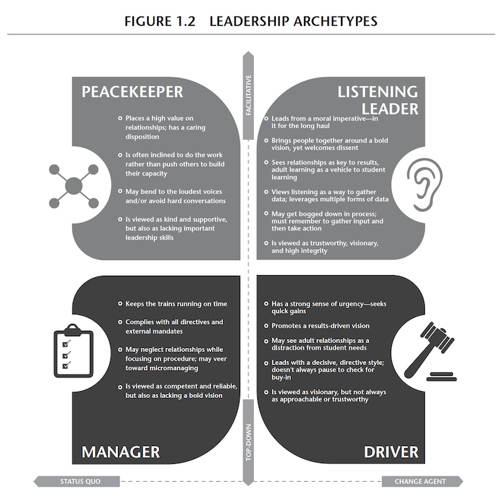When you enter your building each morning, is there a line of your team members waiting at your door? Do they think of you as a manager who can solve their problems? Do you serve as a peacekeeper, mediating conflicts between students, faculty, and the community? Are you a result-focused driver who actively promotes a district-set, results-driven vision? If you answered yes to these questions, does it feel like you are the leader you want to be or would you rather be a listening leader, leading with a moral imperative in it for the long haul? If this is your leadership vision, how do you transform into a trustworthy visionary with high integrity?
In a previous blog, we reflected on and explored the important connection between inclusive leadership and its positive impact on school improvement. There is a critical link between the overall improvement process and the listening leader approach. Our research shows evidence of a direct correlation between a listening leader who tunes into cultural differences and impact on closing learning gaps.
Shane Safir’s The Listening Leader provides insights into how we can create the conditions for equitable school transformation using a very specific framework.
“Listening Leaders tune in to cultural differences and have the capacity to recognize and respond positively to difference, read subtle cultural cues and adjust their moves, (and) embrace humility and a learning stance with respect to culture.”
The manner in which building and district-level leaders present themselves directly effects students and teachers. For decades, we ignored cultural aspects of leadership. The education field did not understand the importance of individual identity and the backgrounds our team members bring into our buildings. We knew it is important to cultivate authentic relationships, but we did not take into consideration the deep positive impact we could have by understanding cultural differences.
According to Safir’s research, if leaders want to builds relationships that lead to trusting and meaningful partnerships, they must consider key principles of deep listening. Holley Central School is an example of these practices in action. While working with the Equity Team, Brendan Keiser, Holley Central’s Director of Teaching and Learning, focuses on building meaningful relationships, understanding their critical importance. . Keiser understands that developing these connections is a process which takes time. Due to Keiser’s listening leader approach and the collaborative partnership between Holley Central and PLC Associates, the district has demonstrated exceptional progress.
What do you need to shift in your daily practice to move towards being a listening leader?
Safir offers four principles of deep listening that can help garnish results:
- Power lies in relationships
- Meet people where they are, not where you want them to be
- Emotional distress interferes with caring behavior and clear thinking
- Everyone is a potential ally
When a leader combines the work of Safir with the principles of Leveraged Leadership, a roadmap for student and school improvement will emerge. It is important to stress as a leader you cannot do this work alone; deeper listening skills will support you in building partnerships with others. PLC and Associates have a long history of supporting schools in cultivating a culture of success and nurturing student voice. Please follow this link to explore options that can guide you in this critical work.
Accomplish Great Things in Your District
We work with you to close gaps, replicate best practices, and build high-impact, sustainable systems.
Let’s Chat About How We Can Help
Reach out to PLC Associates for a 15-minute solutions conversation.
Call us directly at 1-800-774-6801. We look forward to talking with you.


